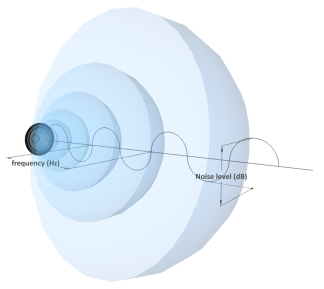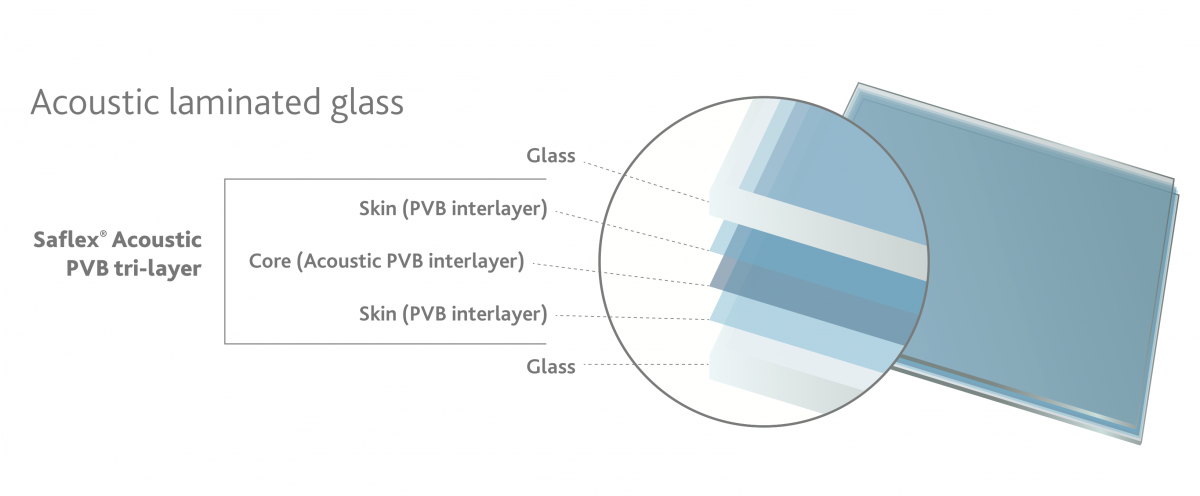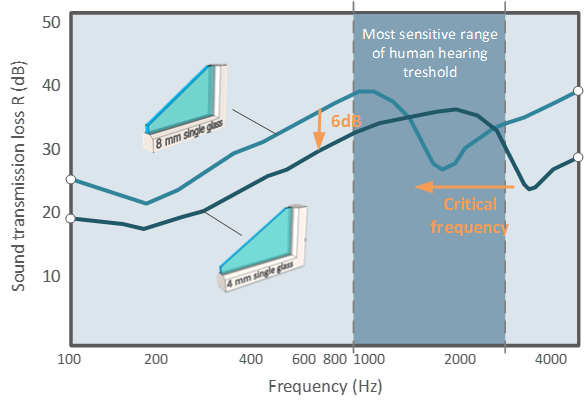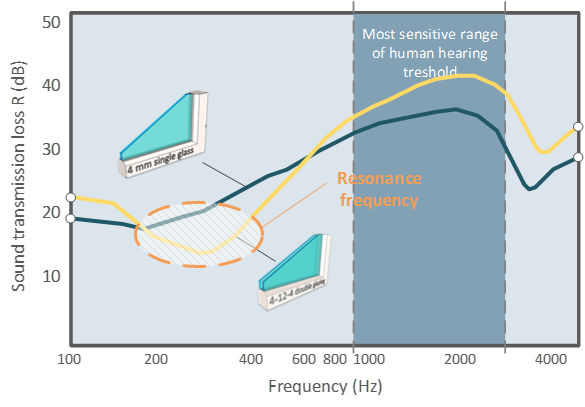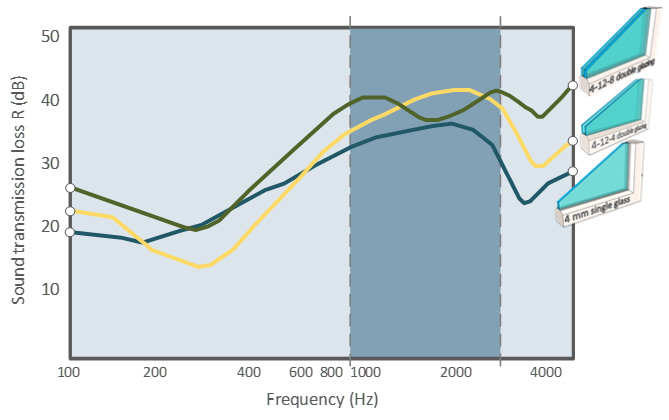Saflex® Acoustic PVB interlayer
Innovative acoustic interlayer for laminated glass
Modern building designs emphasize liberal use of glass. However, sound transmission can be significant through ordinary glass. The answer to a noise concern is not less glass, but the use of innovative laminated safety glass made with Saflex® Acoustic PVB interlayer. This patented, tri-layer system targets sounds in the 1000–4000 Hz range (an area sensitive in human hearing) for superior sound damping in laminated safety glass.
Sound transmission loss
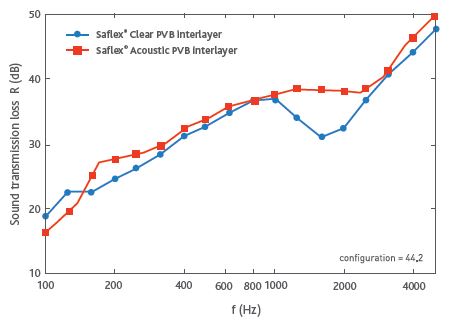
*Sound Transmission Loss of Laminated Glass with Saflex® Acoustic interlayer and Saflex® Clear interlayer. Configuration = 44.2
The ability to reduce noise as perceived by the human ear can be measured. This measurement involves sending specific frequencies of sound through a material, in this case, laminated glass with Saflex® Acoustic interlayer, and remeasuring what comes “through” the glass to determine what gets “filtered” out. The transmission loss is recorded and can be illustrated in graphical form as shown above in the figure.
As a result of Saflex Acoustic PVB interlayer availability, architects and engineers can design elegant spaces that reduce perceived loudness by up to 50%—decreasing transmitted sound up to 10 decibels versus non-laminated glass, in the critical frequency range.
Saflex Acoustic PVB interlayer is also compatible with the Vanceva® Colors and Earth Tones interlayer systems, so architects and designers can create safe spaces without sacrificing style or comfort.
Applications:
Airports, hotels, business offices, government buildings, hotels, restaurants, boardrooms, meeting rooms, medical care centers, health clinics, school classrooms, lecture halls, recording studios, broadcast facilities, concert halls, theaters, auditoriums, museums
Saflex Acoustic Product Selector

Saflex Acoustic Product Performance

|
#/pagina
|
|



